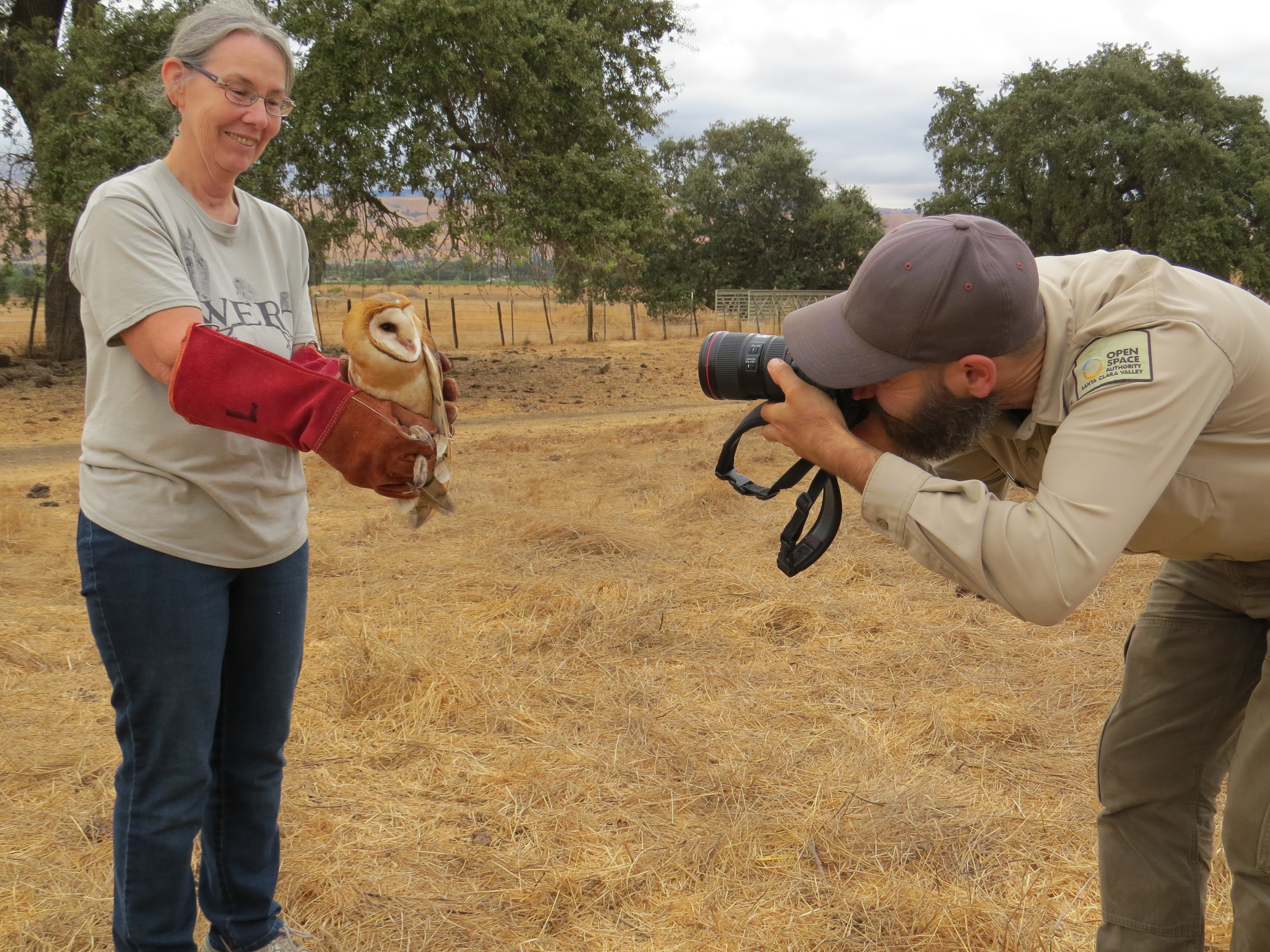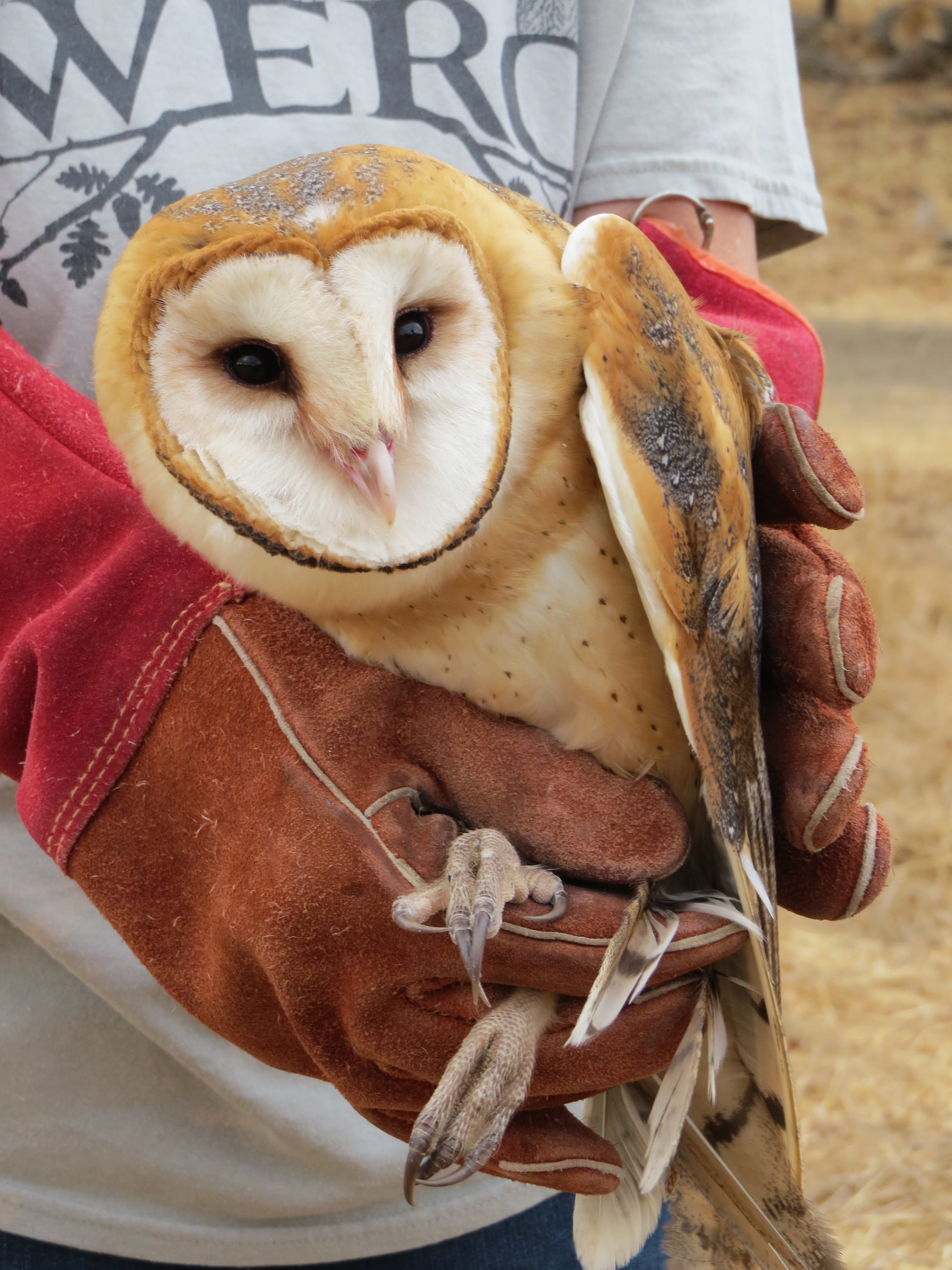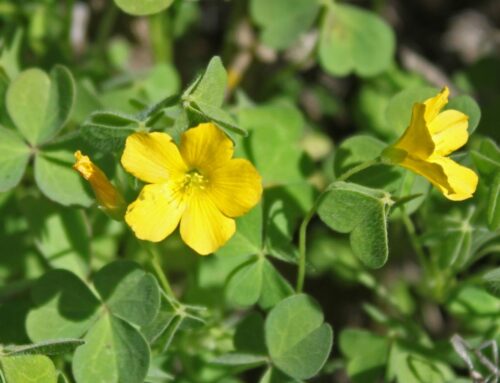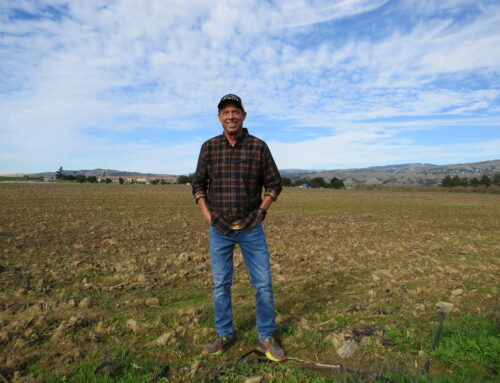WERC releases barn owl back into Coyote Valley Open Space Preserve
Published in the November 21 – December 4, 2018 issue of Morgan Hill Life

Photo by Marty Cheek
Collen Grzan, a WERC volunteers, takes a moment for a photo with the barn owl by Patrick Stevens.
The barn owl found itself in deep doo-doo … literally.
On a September evening, thinking it had found a nice tree trunk hole to spend the night, the bird flew down the chimney of a pit toilet at the Coyote Valley Open Space Preserve. Unfortunately, it went too far and got stuck in the muck that filled the cement container “basement.”
But never fear. WERC is here . . . to help rescue their fine feathered friend.
“This happens all around the U.S. These chimneys are vents to let methane and all the gas escape from the waste on the bottom,” said Joy Joyner, president of the nonprofit group Wildlife Education and Rehabilitation Center based in Morgan Hill.
The chimney top had no screen to prevent cavity nesters from entering them and facing an unfortunate result, she said.
“To a bird, that looks like a nice, safe tree trunk. They go, go, go down — and land in all the waste on the bottom,” she said. “And then they’re stuck. They’re wet and soaked with all this awful stuff and can’t fly out.”
 Luckily, a woman had been enjoying a sunset hike at the preserve located north of downtown Morgan Hill. When she went inside the pit toilet to answer the call of nature, nature called back with a loud, angry shriek from below that gave her a fright. Soon, she realized the problem was a stuck bird — and phoned the Open Space Authority to report the captured critter.
Luckily, a woman had been enjoying a sunset hike at the preserve located north of downtown Morgan Hill. When she went inside the pit toilet to answer the call of nature, nature called back with a loud, angry shriek from below that gave her a fright. Soon, she realized the problem was a stuck bird — and phoned the Open Space Authority to report the captured critter.
Open Space Technician Patrick Stevenson arrived and, at first, was uncertain how to handle the emergency. He did a quick search on the web for owl rescue and up popped WERC’s website. He made an emergency call. Joyner and fellow WERC volunteer Colleen Grzan rushed to the rescue, knowing time was critical for the barn owl’s survival.
When Grzan saw the situation, her first thought was: “I’m not going in there.”
But the life of the barn owl was at stake. She wrinkled her nose and committed to the cause.
“Thankfully, the toilet was full, so the owl was high up,” she recalled. “We tried with a catch bowl to get down into the toilet because it was right there…. The owl was sitting on an island.”
 As they brought the catch bowl closer, the frightened owl stepped off the island, she said.
As they brought the catch bowl closer, the frightened owl stepped off the island, she said.
“It landed in the soup,” she said. “We were able to get him before he sank.”
“We were making awful jokes as we were getting him out,” Joyner added. “The smell was so bad. It was baaaad.”
But the bird’s emergency rescue also demonstrates the dedication of WERC volunteers to help out wildlife, she said.
The WERC team spent a good half hour at the site washing the bird and getting the chunks off him before they would bring him back to WERC’s site. The next day they gave him a soapy bath to get off all the remaining goo because they didn’t want bacteria to grow and cause a disease. Owl feathers aren’t waterproof, so cleaning him allowed the owl to start preening again.
“This is the first time we’ve ever had to get one from a pit toilet,” Joyner said.
The problem of birds getting stuck going down the venting chimneys of remote pit toilets and getting stuck is a serious one — and one that is easily fixed, she said. The Teton Raptor Center started a “Poo-Poo Project” to install relatively inexpensive screens on the top of the chimneys. After the mishaps of the bird at the Coyote Open Space Preserve, rangers immediately ordered a screen and installed it to prevent another barn owl from suffering the same fate.
At sunset Oct. 3, Grzan, Joyner, Stevenson and Open Space Technician Cliff Irrebaria returned the now recovered barn owl to its Coyote Valley home. They took a few minutes for a photo session as Grzan held the bird and Stevenson snapped his camera. And then, she released it.
Free again, the owl flapped its wings and headed straight for a nearby oak tree.
WERC and the Open Space Authority, which manages the preserve, often work together to release wild animals back into their natural homes, Joyner said.
“This is the place to be,” she said. “There’s lots of food. The Open Space Authority has been a great advocate for making sure we have places for wildlife. They find an animal on their properties that needs helps, they call us. If we have an animal that needs to be released back into nature, we call them.”
And no doubt, thanks to WERC’s rescue, there’s one wiser barn owl that will think twice before heading down a pit toilet chimney again.




